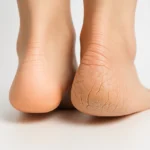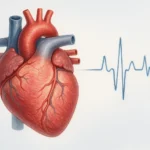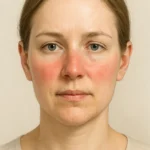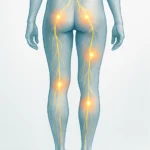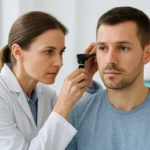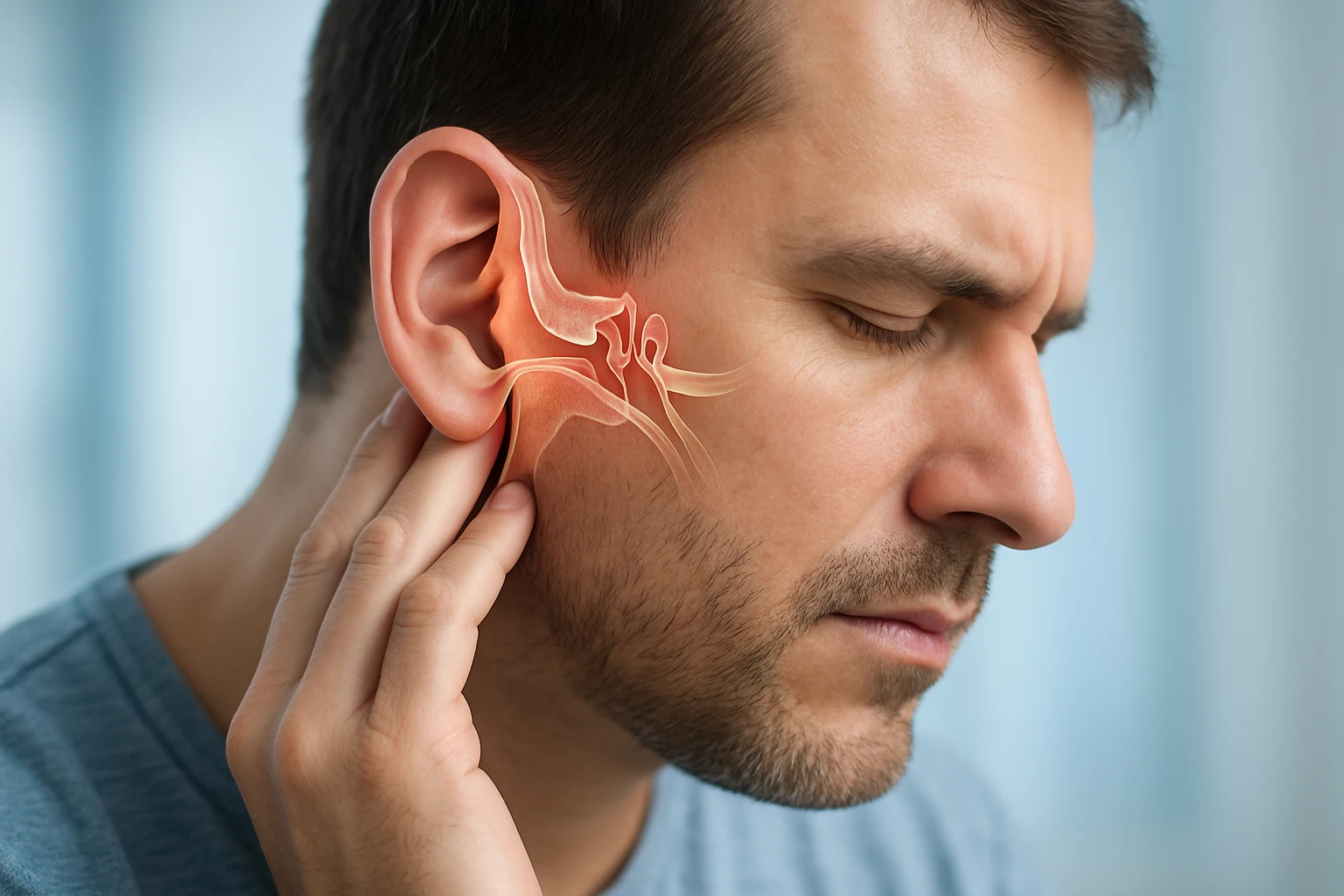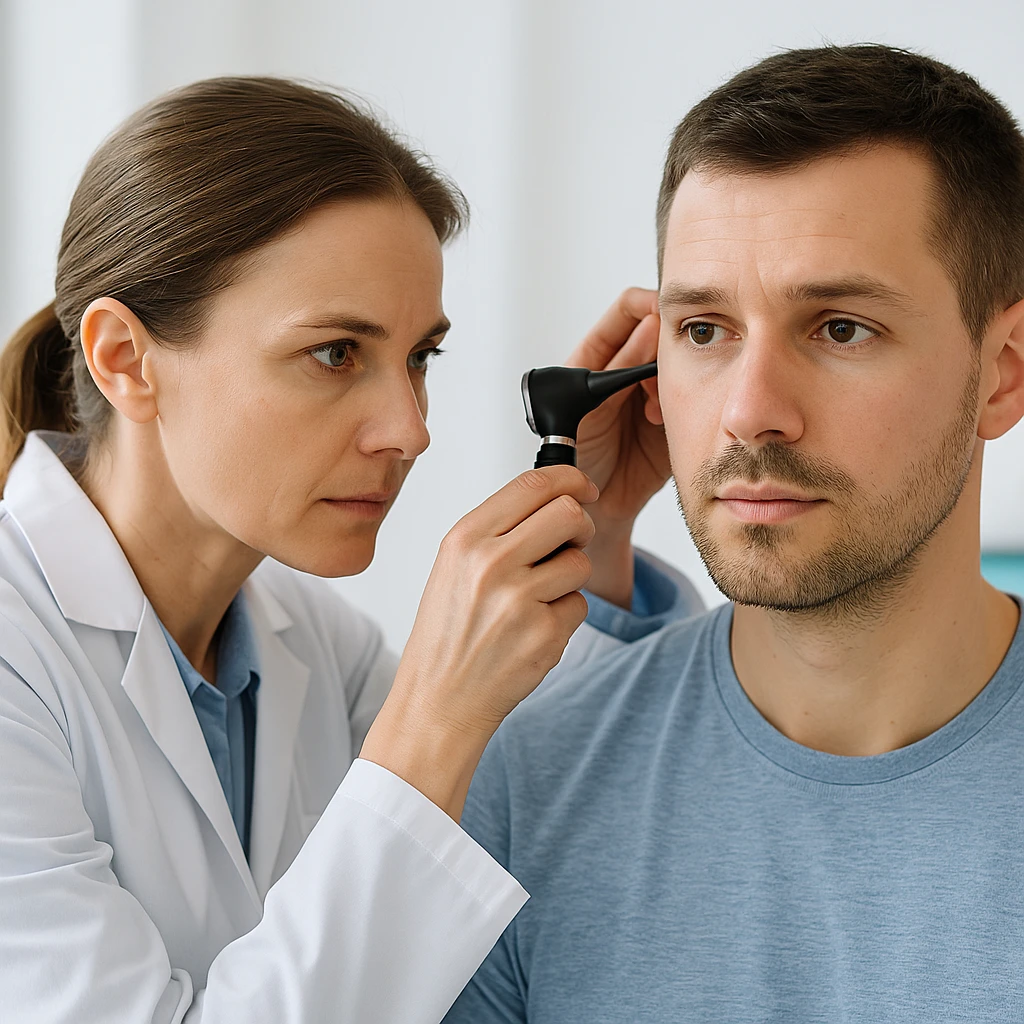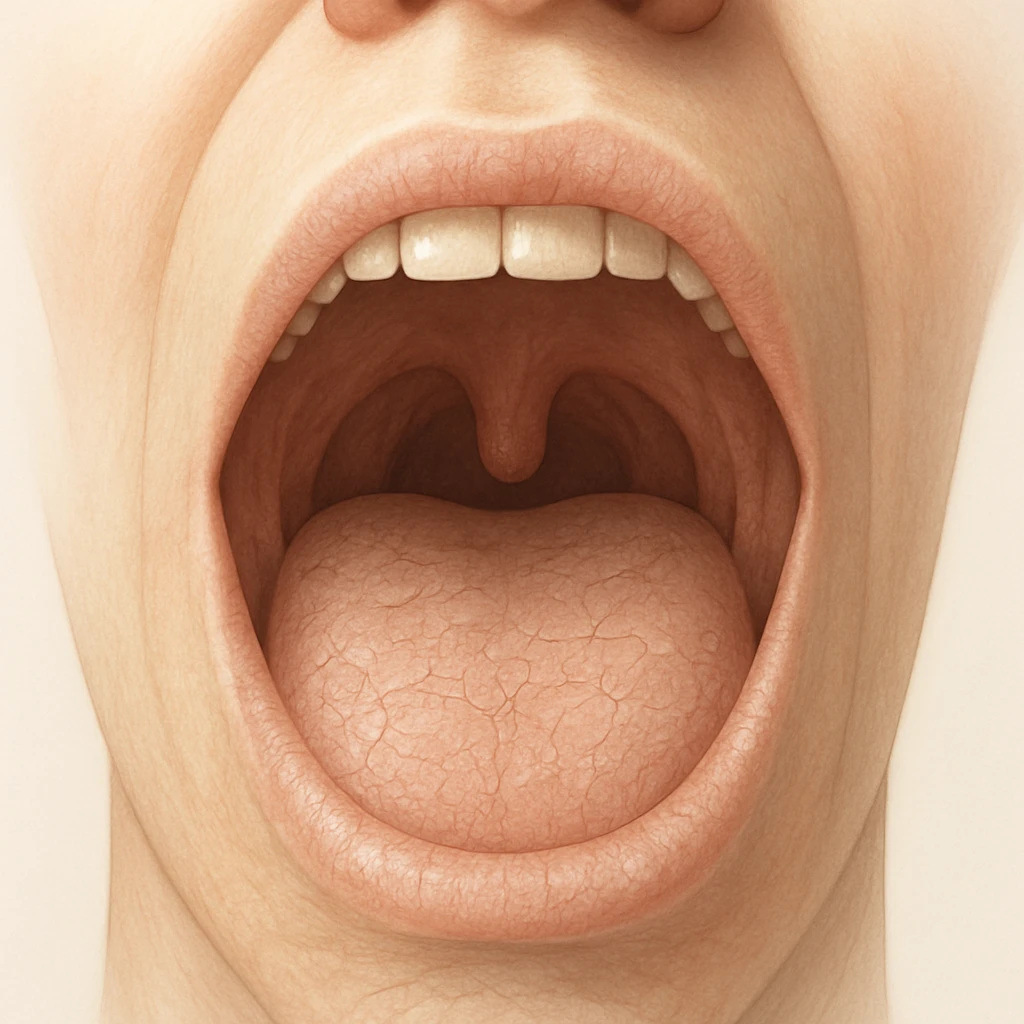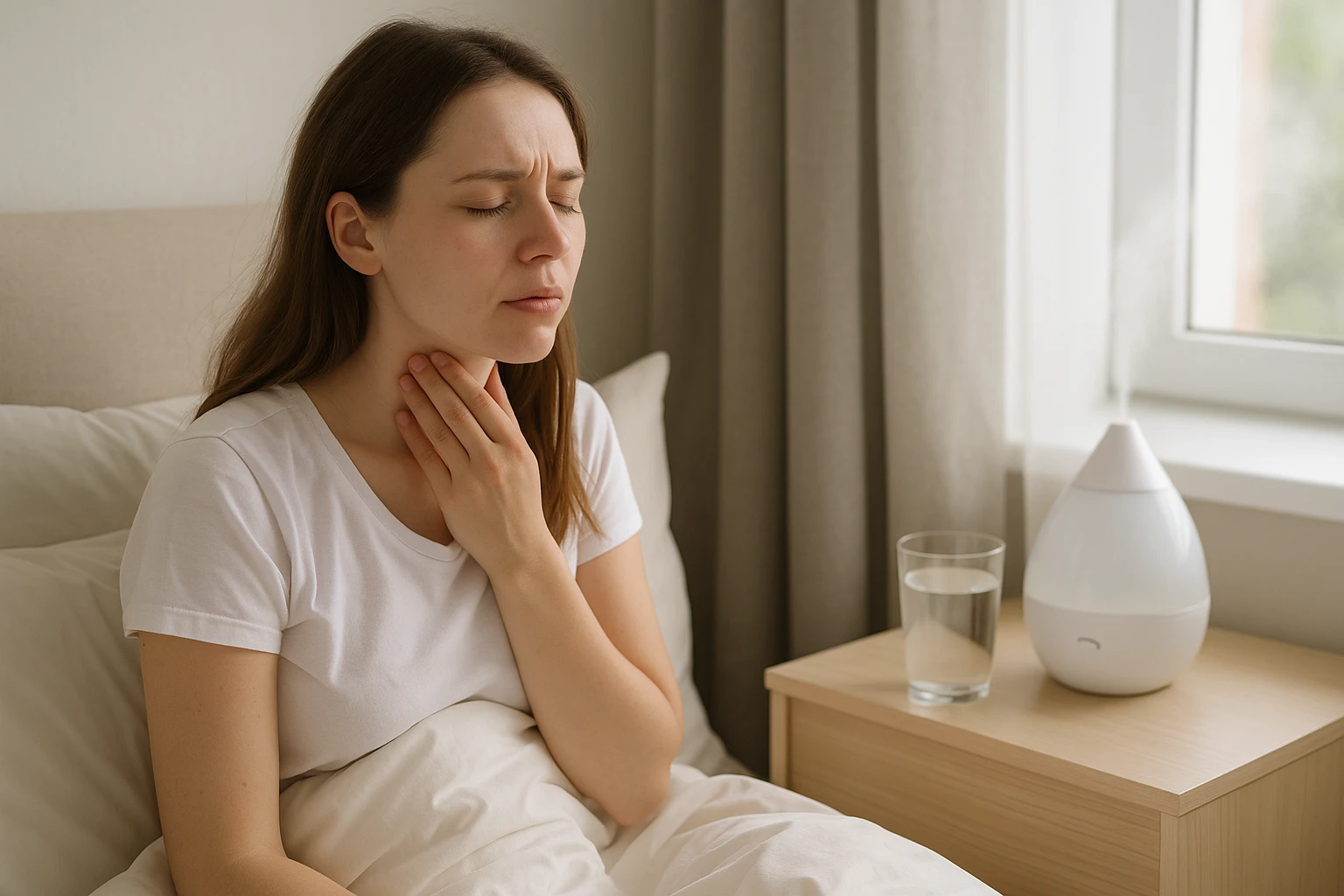
Why Your Ears Feel Full and How to Relieve the Pressure
What Is Ear Fullness?
A sensation of ear fullness or pressure is a common symptom that many people experience, often described as a feeling of blockage or congestion inside one or both ears. While it is usually temporary and harmless, ear fullness can arise from several underlying conditions, such as eustachian tube dysfunction, earwax buildup, sinus congestion, or rapid pressure changes during flying or diving. In some cases, it may signal infection or inflammation within the middle ear. Understanding the causes and associated symptoms helps determine when simple home measures are appropriate and when professional evaluation is needed.
This article explains how ear fullness develops, what conditions most often cause it, and how it can be safely managed or prevented.
How the Ear Regulates Pressure
Ear fullness is a common sensation described as pressure, blockage, or congestion within one or both ears. Rather than being a disease itself, it is a symptom that signals changes in how the ear regulates air pressure or responds to surrounding conditions. The feeling may come and go, often varying with swallowing, yawning, or changes in altitude, such as during flights or while driving through mountains.
Under normal circumstances, the middle ear maintains equal air pressure on both sides of the eardrum. This balance is controlled by a narrow passage called the eustachian tube, which connects the middle ear to the back of the nose and throat. Each time a person swallows or yawns, the eustachian tube briefly opens to let air move in or out, keeping pressure stable and ensuring that sounds are transmitted clearly.
When this tube becomes blocked or does not open properly-a condition called eustachian tube dysfunction-the pressure inside the middle ear cannot equalize. This imbalance can cause the sensation of fullness, mild discomfort, or muffled hearing. Common triggers include:
- Infections, allergies, or sinus congestion that cause swelling around the tube
- Rapid altitude or pressure changes, such as flying or diving
- Temporary blockage from inflammation or fluid buildup
Most episodes of ear fullness are short-lived and resolve as the eustachian tube function returns to normal. Knowing how the ear balances pressure helps explain why small disruptions-like a cold, allergy flare, or quick change in elevation-can create temporary discomfort.
Common Causes of Ear Fullness
Ear fullness can develop from several different mechanisms that affect how air, fluid, or sound moves through the ear. The most frequent reasons include eustachian tube dysfunction, earwax buildup, infections, pressure changes, and other conditions that interfere with normal ear function.
Main Causes
- Eustachian tube dysfunction: The tube connecting the middle ear to the back of the nose and throat can become inflamed, swollen, or blocked, disrupting air pressure balance. This imbalance may cause discomfort, fullness, or muffled hearing. Triggers include infections, allergies, and sinus congestion.
- Earwax (cerumen) impaction: Excessive earwax can block the ear canal, preventing sound from reaching the eardrum and creating a sense of pressure or fullness.
- Pressure changes and barotrauma: Rapid altitude or pressure shifts-such as during flying or diving-can temporarily deform the eardrum and cause popping sensations or blockage until pressure equalizes.
- Infections and inflammation: Nasal or sinus infections and allergies may cause swelling around the eustachian tube openings, interfering with airflow and pressure regulation.
- Other contributing factors: Acid reflux or chronic nasal inflammation can irritate nearby tissues, keeping the eustachian tube persistently swollen and leading to recurrent fullness.
Although most causes of ear fullness are benign and temporary, identifying the specific trigger-whether blockage, inflammation, or pressure imbalance-supports effective relief and prevention of recurrence.
Symptoms and Diagnosis of Ear Fullness
Ear fullness can present with a range of sensations that vary in intensity and duration. Many people describe it as a feeling of pressure, congestion, or blockage inside one or both ears. The sensation may be constant or come and go, sometimes changing with movements such as swallowing or yawning. In addition to fullness, affected individuals often notice muffled hearing or popping sounds as the ear attempts to equalize pressure.
Common Accompanying Symptoms
- Ringing in the ears (tinnitus)
- Mild ear pain
- Dizziness or imbalance
- Muffled hearing or popping sounds
These sensations occur because the structures responsible for hearing and balance can be affected when pressure changes or fluid builds up. The combination of symptoms helps clinicians determine whether the problem involves blockage, pressure imbalance, or inflammation.
How Ear Fullness Is Diagnosed
- Physical examination: The ear, nose, and throat are examined for inflammation, congestion, or wax buildup.
- Otoscopy: The ear canal and eardrum are inspected for signs of infection, blockage, or visible fluid.
- Observation for eustachian tube dysfunction: A retracted or immobile eardrum suggests poor pressure equalization.
- Tympanometry (if needed): This test measures eardrum movement and middle ear pressure to confirm dysfunction.
Persistent or unexplained ear fullness should be assessed by a healthcare professional to rule out infection, blockage, or structural issues. Early diagnosis ensures appropriate care and helps prevent worsening discomfort or hearing changes.
Treatment and Relief for Ear Fullness
Treatment for ear fullness depends on its underlying cause, but many mild cases improve naturally as air pressure and drainage return to normal. The goal is to relieve discomfort, restore hearing clarity, and prevent recurrence by addressing contributing factors such as congestion, infection, or earwax buildup.
Self-Care and Home Remedies
- Pressure equalization: Swallowing, yawning, or gently performing the Valsalva maneuver can help open the eustachian tube and balance ear pressure.
- Decongestants or nasal sprays: Short-term use may reduce swelling and improve airflow between the nose and middle ear.
- Rest and hydration: Allowing inflammation to subside naturally often restores comfort and hearing clarity.
Professional and Condition-Specific Treatments
- Earwax (cerumen) impaction: Treated with softening agents or professional removal through irrigation, suction, or specialized tools when blockage is significant.
- Barotrauma: Typically self-resolving, though persistent cases may require medication or, rarely, surgical intervention to relieve trapped air or fluid.
- Allergies, sinus issues, or infections: Addressing inflammation or infection helps restore normal eustachian tube function and prevents recurrence of ear fullness.
When to Seek Medical Care: If ear fullness persists or worsens despite self-care, a clinical evaluation is essential to rule out infection, chronic eustachian tube dysfunction, or structural causes. Most individuals recover fully with timely and appropriate treatment.
Prevention and Ear Care
Good ear care and preventive habits can greatly reduce the risk of ear fullness or related discomfort. Because the ears are delicate and self-cleaning, the focus should be on avoiding irritation and preventing blockage or injury.
Practical Prevention Tips
- Safe ear hygiene: Avoid inserting cotton swabs or objects into the ear canal. If wax buildup occurs, seek professional cleaning instead of self-removal.
- Manage allergies and nasal congestion: Keep nasal passages clear and reduce inflammation to prevent eustachian tube dysfunction and pressure imbalance.
- Equalize pressure during flights or dives: Use gentle techniques such as swallowing, yawning, or blowing while pinching the nose. Nasal sprays or decongestants may help before takeoff or descent.
- Monitor persistent symptoms: Recurrent fullness, pain, or hearing changes should be assessed by a healthcare provider to rule out infection or blockage.
Key Takeaway: Protecting your ears means maintaining safe cleaning habits, managing allergies and congestion, and taking simple steps to equalize pressure during altitude changes. Persistent or worsening ear fullness should always be evaluated by a medical professional to maintain long-term ear health.
Frequently Asked Questions About Ear Fullness
Why do my ears feel full even when I don’t have an infection?
A feeling of ear fullness without infection often comes from eustachian tube dysfunction, where pressure inside the middle ear cannot equalize. Allergies, sinus congestion, or altitude changes can also cause this sensation.
Can ear fullness cause hearing loss?
Temporary hearing changes are common when ear fullness occurs, especially if the ear canal is blocked by wax or fluid. Once the blockage or pressure imbalance is corrected, hearing usually returns to normal.
How long should ear fullness last before seeing a doctor?
If the feeling lasts more than a few days, worsens, or is accompanied by pain, dizziness, or hearing loss, a medical evaluation is recommended. Persistent symptoms can signal infection, blockage, or structural issues.
Are there home remedies to relieve ear fullness?
Simple techniques like swallowing, yawning, or gently blowing while pinching the nose can help equalize pressure. Using a nasal spray or treating allergies may also bring relief if congestion is the cause.
Is it safe to remove earwax at home?
It’s best to avoid using cotton swabs or sharp objects, as these can push wax deeper or injure the ear canal. Instead, use a wax-softening solution or seek professional ear cleaning if needed.
Can air travel or diving make ear fullness worse?
Yes. Rapid pressure changes during flights or dives can strain the eustachian tube, leading to temporary fullness or popping. Equalizing pressure before and during altitude changes helps prevent discomfort.
What can I do to prevent recurring ear fullness?
Manage allergies and nasal congestion, keep your ears clean but undisturbed, and equalize pressure during travel or altitude changes. Regular checkups can help identify chronic or structural problems early.
